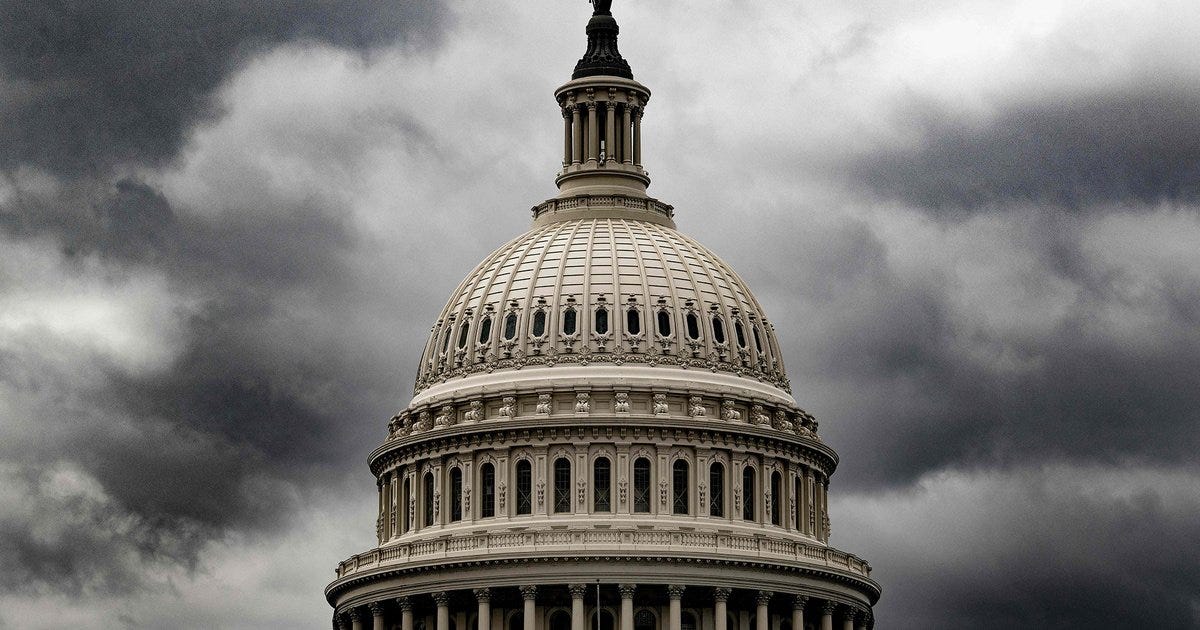The U.S. Government could run out of money by August, but here’s why that’s not the catastrophe you’re being sold
The debt ceiling drama is back. The CBO is ringing the alarm bells. But is the U.S. actually about to default, or is this all smoke and mirrors?
Every few years, America goes through the same political soap opera: the debt ceiling debate. The latest instalment comes with a dire warning from the Congressional Budget Office (CBO): if Congress doesn’t act, the U.S. Treasury could run out of money as early as August 2025.
Cue the media hysteria.
Headlines scream about a looming default. News anchors talk about economic collapse. And yet, beneath all the panic, the actual mechanics of what’s happening tell a different story, one that’s far less catastrophic and much more political.
Let’s break it down in plain English.
💰 What’s the TGA and why it matters
The Treasury General Account (TGA) is like the U.S. government’s checking account at the Federal Reserve. It’s where all incoming tax revenues go and from where all government spending is paid.
Over the past few years, the balance in the TGA has fluctuated wildly, from near zero to over $1 trillion. But in January 2025, we hit the debt ceiling again. And that means the Treasury can no longer increase its total outstanding debt.
So what happens when the TGA balance starts running out (and it’s draining fast)?
That’s where the real drama begins, or, at least, where the media wants you to think it does.
🚨 The great debt ceiling lie
The popular narrative: If Congress doesn’t raise the debt ceiling, the U.S. will default on its $36.6 trillion in debt.
Reality check: That’s not how it works.
While the debt ceiling prevents adding new debt, it doesn’t stop the Treasury from rolling over existing debt. In other words, the Secretary of the Treasury can still issue new bonds as long as they replace maturing ones, keeping the total debt constant.
So, no, America isn’t about to stiff its bondholders. Investors holding U.S. Treasuries are still getting paid. The default the media warns about, on principal and interest payments, is not actually happening.
🧾 What could happen
What will happen if the Treasury runs out of room? Non-debt government spending could get delayed or paused.
That means:
Federal employees might not get paid on time.
Contractors and aid recipients (like Ukraine's Zelenskyy) might be left hanging.
Some services could shut down temporarily.
But we’ve seen this before. Multiple times. Government shutdowns come and go, and most people barely notice.
🧠 Why this matters more than you think
Here’s the bigger issue: The debt ceiling is supposed to act as a brake on runaway government spending. But in recent decades, it’s become little more than a bargaining chip, a way for political parties to hold each other hostage.
Instead of taking this as a moment to actually cut spending or rethink fiscal priorities, both parties wait until the last second, raise the ceiling, and kick the can down the road.
It’s the same playbook every time.
💡 So should you be worried?
Short-term? Maybe, depending on how reliant you are on federal dollars.
Long-term? You should be concerned, not because the government will run out of money, but because this level of spending and debt is simply unsustainable.
We need less government intervention, not more. Less borrowing, not more. Real growth comes from the private sector, innovation, and responsible monetary policy, not from more stimulus checks or endless wars.
📢 Final thoughts
The CBO’s warning isn’t fake. But the idea that the U.S. will default on its debt is.
This whole panic is a political tool, and unless Americans start demanding fiscal responsibility from their elected officials, we’ll be back here again in 2026. And 2027. And 2028.
It’s time to make the debt ceiling actually mean something again.
If you enjoyed this article please hit ❤️, or share it with a friend who’s concerned that the U.S. Government will default on its debt. Thanks for reading.


